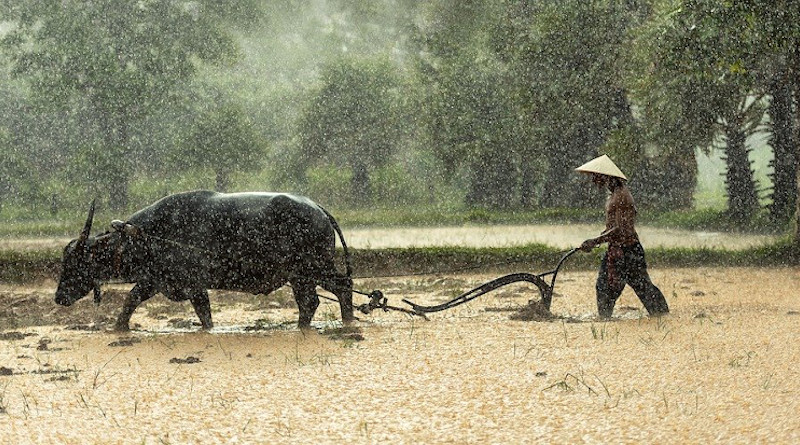Farm-Level Study Shows Rising Temperatures Hurt Rice Yields
A study of the relationship between temperature and yields of various rice varieties, based on 50 years of weather and rice-yield data from farms in the Philippines, suggests that warming temperatures negatively affect rice yields.
Recent varieties of rice, bred for environmental stresses like heat, showed better yields than both traditional rice varieties and modern varieties of rice that were not specifically bred to withstand warmer temperatures. But the study found that warming adversely affected crop yields even for those varieties best suited to the heat. Overall, the advantage of varieties bred to withstand increased heat was too small to be statistically significant.
One of the top 10 countries globally in rice production, the Philippines is also a top-10 rice importer, as domestic supply cannot meet demand.
Roderick Rejesus, a professor and extension specialist of agricultural and resource economics at North Carolina State University and the corresponding author of a paper that describes the study, says that teasing out the effects of temperature on rice yields is important to understand whether rice-breeding efforts have helped address the environmental challenges faced by modern society, such as global warming.
The study examined rice yields and atmospheric conditions from 1966 to 2016 in Central Luzon, the major rice-growing region of the Philippines. Rejesus and study colleagues were able to utilize farm-level data of rice yields and area weather conditions in four-to-five-year increments over the 50-year period, a rare data trove that allowed the researchers to painstakingly examine the relationship between rice yield and temperature in actual farm environments.
“This rich data set allowed us to see what was actually happening at the farm level, rather than only observing behavior at higher levels of aggregation like in provinces or districts,” Rejesus said.
The study examined three general rice varieties planted during those 50 years: traditional rice varieties; “early modern varieties” planted after the onset of the Green Revolution, which were bred for higher yields; and “recent modern varieties” bred for particular characteristics, like heat or pest resistance, for example.
Perhaps as expected, the study showed that, in the presence of warming, recent modern varieties had the best yields when compared with the early modern and traditional varieties, and that early modern varieties outperformed traditional varieties. Interestingly, some of the early modern varieties may have also mitigated heat challenges given their smaller “semi-dwarf” plant architecture, even though they were not bred to specifically resist heat.
“Taken all together, there are two main implications here,” Rejesus said. “The first is that, at the farm level, there appears to be a ‘yield gap’ between how rice performs in breeding trials and on farms, with farm performance of recent varieties bred to be more tolerant to environmental stresses not being statistically different relative to the older varieties.
“The second is that rice breeding efforts may not have reached their full potential such that it may be possible to produce new varieties that will statistically perform better than older varieties in a farm setting.”
Rejesus also acknowledged that the study’s modest sample size may have contributed to the inability to find statistical significance in the differences in warming impacts between rice varietal yields.
“This paper has implications for other rice-breeding countries, like Vietnam, because the timing of the release of various rice varieties is somewhat similar to that of the Philippines,” Rejesus said. “Plant-breeding institutions can learn from this type of analysis, too. It provides guidance as to where research funding may be allocated by policymakers to further improve the high temperature tolerance of rice varieties available to farmers.”
Rejesus plans to further study other agricultural practices and innovations that affect crop yields, including an examination of cover crops, or plants grown on cropland in the off season that aim to keep soils healthy, to gauge whether they can mitigate the adverse impacts of a changing climate.

